Scopes & Binoculars Zoom Test – 4x, 6x, 7x, 8x, 9x, 10x, 16x, 20x, 30x, 60x Magnification Comparisons!
Magnification / Zoom comparisons of monoculars, spotting scopes and binoculars, ranging from 4x to 60x, to help you determine the ideal zoom for your needs. This comprehensive test showcases various zoom magnifications, objective lens sizes, and optical qualities. Discover the impact different magnifications have on the field of view, image brightness, and image detail, and learn how different factors contribute to achieving the best viewing experience.
Part 1: Close Range
4x, 6x, 7x, 9x, 10x, 15x, 20x, 30x, or even 60x, what magnification, or zoom should I get for my binoculars, monocular, or spotting scope?
This is a type of question that I am often asked and so I am going to show you what the view looks like through a wide range of optical instruments, but also discuss how a number of other factors and not just power or a large zoom contribute to achieving the best view possible depending on your specific requirements or interests.
Variables
For this test, I used a variety of binoculars, spotting scopes, and monoculars, all with different magnifications (zooms) and different objective lens sizes. The quality of optics (glass and coatings) between the optical devices I used also varied considerably.
Constants
Unless stated, all images and videos you see below were taken from the same locations looking at the same subjects. I also used the same camera, with the same lens and with the same settings dialed in.
As far as possible, I also tried to ensure that the light conditions were as similar as possible, but as the filming took me almost a whole day, the direction of the sun obviously varied. I did however group the similar comparisons together, so the time of day and light conditions were close.
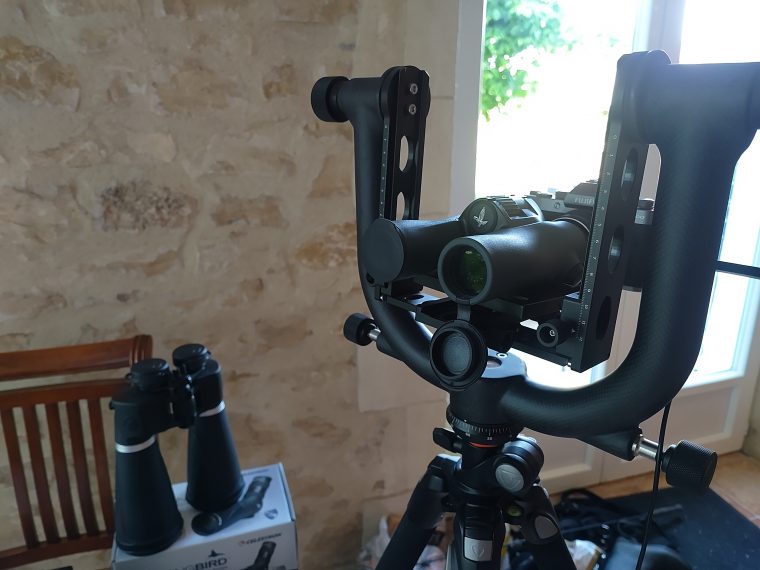
Equipment Setup
So before we get started with the binocular zoom comparison tests, I just wanted to quickly take you behind the scenes and show you the equipment and setup I used to get the images and video footage:
I have a bunch of good to excellent digibinning/digiscoping adapters in my collection, many of which I have reviewed (more details & links in the Accessories Section), but most that I have are for smartphones and as I was using a very wide range of optical devices, all with different shapes and sizes of bodies and eyepieces, it was not possible for me to find a single adapter that would accommodate them all and the lens on my APS-C camera, and so to make this comparison test as equal as possible I came up with this somewhat elaborate, but effective setup:
For the smaller and standard-sized binoculars, I fixed my camera right at the rear of the mounting plate on my MOVO GH1000 Gimbal Tripod Head attached to Vanguard Alta Pro 263AT Tripod. I would then simply slide the binoculars in between the cradle, offering one of the eyepieces up to my camera lens. To make fine height adjustments, I would simply use a folded cloth under the binoculars.
Then for the large binoculars and spotting scopes, I mounted these to a second tripod, my Bresser BX-5 PRO Tripod which has a super adjustable liquid-mounted video head, which in combination with the gimbal head on the Vanguard tripod allowed me to position the eyepieces in the perfect position to film through.
Is this setup practical in anything other than use from a static position? No! But once I had set it up, I found it worked very well, allowing me to swap between the different binoculars, monoculars, and scopes fairly easily and I do feel it enabled me to keep the playing field as level as possible.
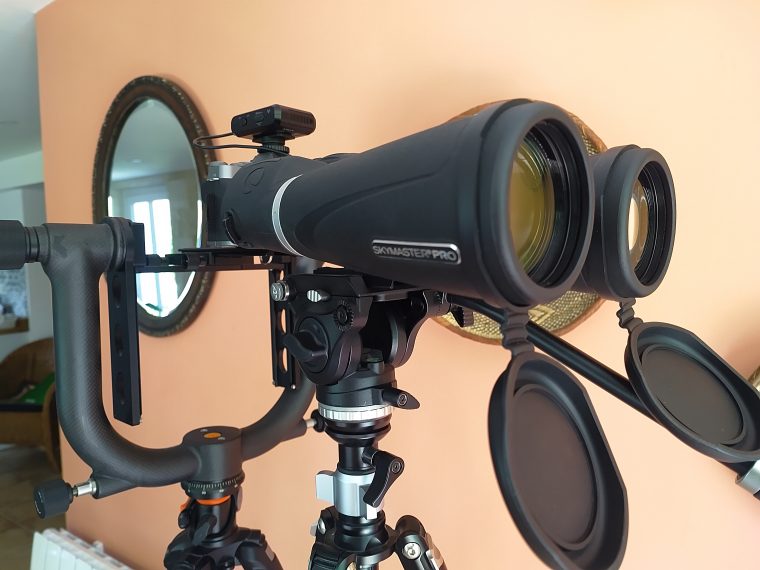
Close Range Observation
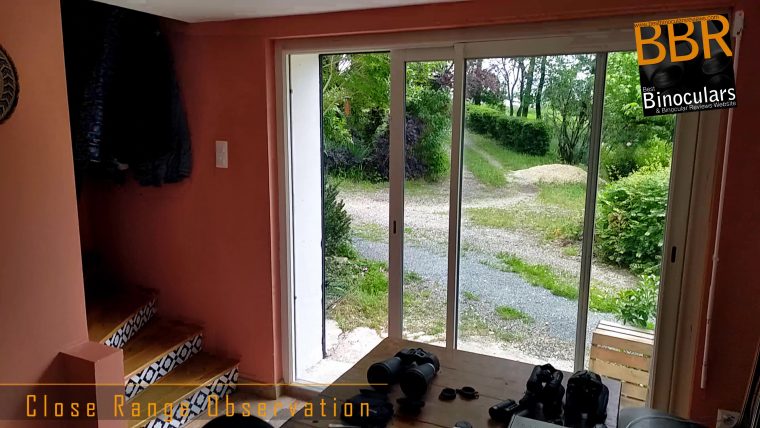
So to begin with I positioned my set up about 5 meters away from a bird feeder located in a tree just outside some sliding doors downstairs, which as long as I am quiet does not deter birds from visiting.
This view is taken from this position using my Fujifilm X-T200 camera with a 25mm lens attached.
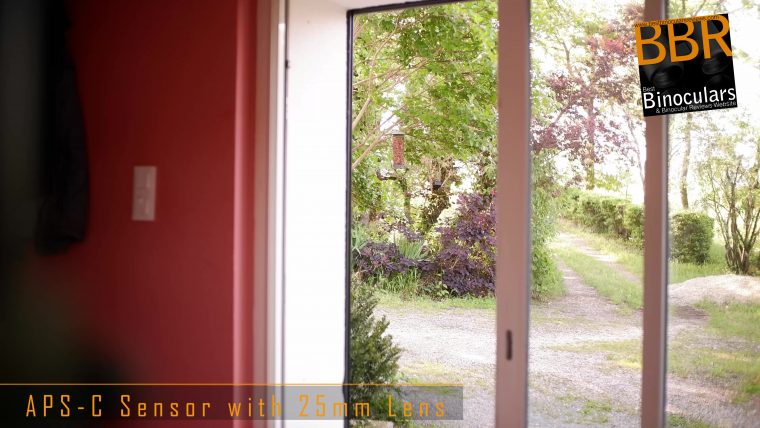
I have read that for an APS-C sensor camera like this, the equivalent range that gives a similar field of view as that of the human eye is between 28-34mm.
This I would agree with, but to approximate what the “normal” or 0x zoom looks like through my eyes, I have had to zoom into the image a little here, which reduces the field of view compared to normal eyesight.
Right, so onto the Zoom comparisons:
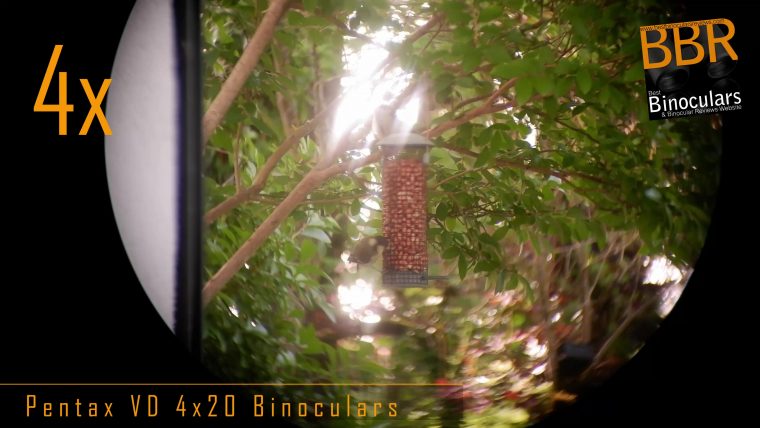
4x
First on the list is the lowest-powered “binoculars” I have. The tiny Pentax VD 4x20 WP Binocular, and whilst I call it a binocular, it can actually split into two and thus transforms into a pair of 4x monoculars, and then on top of that, you can join these two monoculars end-on-end, to produce a very small 16x scope – but more on that later.
What is interesting to me here is because of the low 4x power, you get a very wide field of view compared to most other binoculars and thus you can still see the inside of the house.
I would also like to note that because they went first, I was still experimenting and getting used to the setup. As well as this, the sun was still quite low in the sky and in front of us, so whilst there is some curvature in the view when you look through the binoculars, I would say what I captured really does not do this super little instrument any justice and I would just say whilst I really like it, I don’t think I’d recommend it for digiscoping!
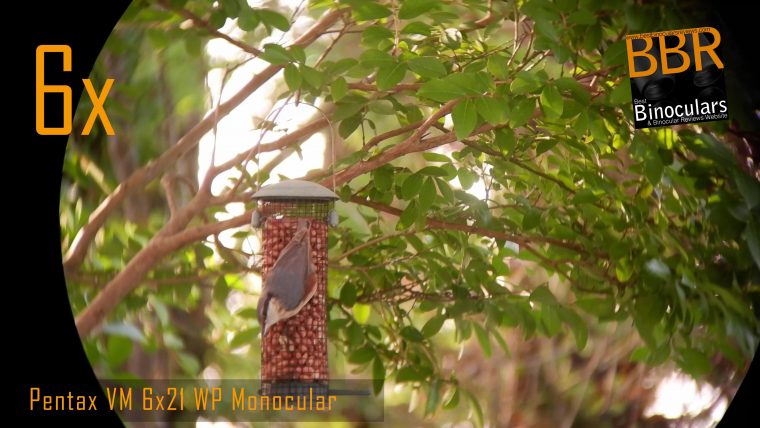
6x
Next, we move up to a 6x zoom, which is still considered very low in the sporting optics world and to demonstrate I have another really tiny instrument from Pentax, the Pentax VM 6x21 WP Monocular.
I found this much easier to work with and achieve a sharp image than the 4x monocular which was largely down to the way you adjust the focus using a unique rocker.
Apart from usually having a much wider field of view, a big advantage of a less powerful magnification like this is you don’t need large lenses in order to produce a reasonably large exit pupil. I go over the exit pupil in detail here, but most importantly a large exit pupil plays an important part in ensuring you see a brighter image, especially in low-light conditions and it really helps when digiscoping.
So even though this 6x monocular only has a very small 21mm lens, with its good quality optical system and 3.5mm exit pupil, you can see I was able to capture a really bright, crisp image with it when the light conditions were reasonably favorable.
Also at close range like this, the relatively wide field of view made it much easier for me to lock onto my target (the birdfeeder) than the more powerful instruments I used later.
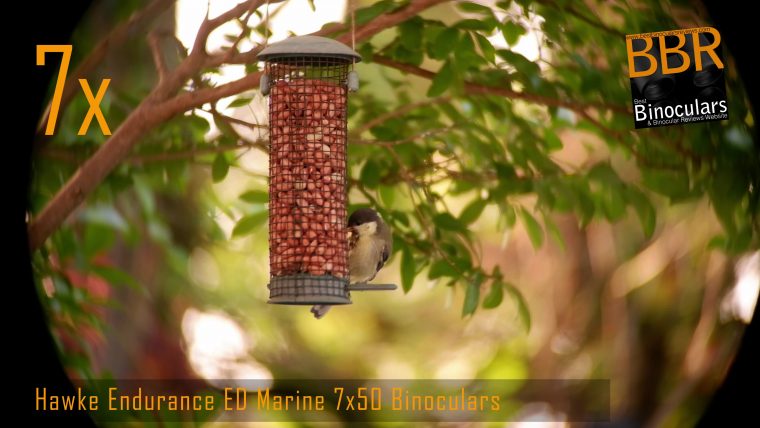
7x
Due to them generally having a wide field of view and relatively large exit pupils in relation to the objective lens sizes, both of which are important in foresty types of environments, a 7x zoom on a binocular was traditionally the preferred magnification for users like for birders.
However, times have changed and whilst it is still the most common option for a marine binocular (due to the added image stability you get with lower magnifications), it is currently quite difficult to find a standard 7x binocular designed specifically with terra firma uses as the main focus.
So to demonstrate the 7x zoom level, I have the Hawke Endurance ED Marine 7x50 Binoculars, and whilst they are labeled marine binoculars, they have a number of non-typical marine features that I go through in detail in their review, which means they work equally as well for many land-based uses as well.
The 7x50 configuration produces a very large exit pupil of more than 7mm which helps a lot in low-light conditions.
This large exit pupil also meant that I found this binocular to be noticeably easier for me to line it up with the camera and get a good image.
When using a binocular in the normal way with your eyes, this also holds true, as binoculars with large exit pupils make lining them up correctly with your eyes to achieve a full field of view much easier to achieve. And whilst you can’t see it because I am using a tripod to get these images, it is also easier to get a shake-free view and it is for these reasons and more that I always suggest lower-powered binoculars for newbies, older people, and especially kids.
Having said that, don’t think that a low magnification is not also for more advanced users: With their good low light capabilities, and wide, shake-free views, I happily and often choose a 7x zoom binocular for my general day-to-day use, most of my forest and backyard birding, and wildlife observation. I just wish they had not gone out of fashion and that there were more of them readily available on the market.
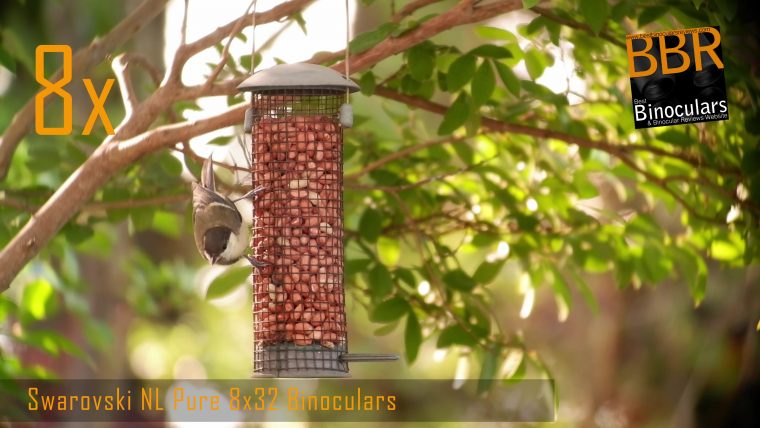
8x
Binoculars with an 8x zoom are now the most common choice for the general forest type of birder and wildlife observer as it provides a little more reach/image detail than a 7x zoom, and you usually don’t have to compromise much in terms of the field of view, low-light capabilities, and amount of image shake.
Exit Pupil is not Everything
In fact, as is aptly demonstrated by the fantastic footage I captured here using the Swarovski NL Pure 8x32 binoculars (4mm exit pupil) if you opt for the highest level of optical quality, you can actually achieve a better, brighter view than lesser binoculars with much larger exit pupils.
However, do keep in mind that you will have to spend A LOT of money to achieve this, so other than for interest is not fair to compare the image quality of a $300 instrument against one like this that costs almost $3000!
In future articles and videos, I do plan to compare image quality between binoculars of the same configurations, but at different price points as then also binoculars with the same magnification, but different-sized objective lenses and thus different exit pupil sizes, but for now I am trying and I also want you to try to keep the main focus of your attention on the different zoom levels and how they compare!
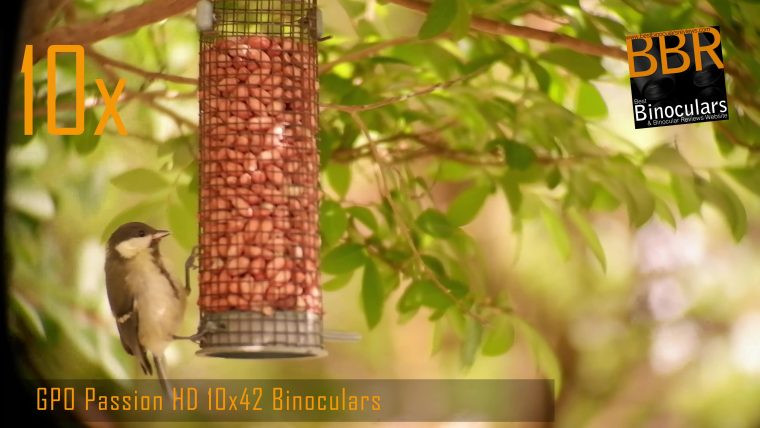
10x
To demonstrate the 10x zoom, I have used footage captured with two different 10x42 binoculars, the GPO Passion HD 10x42 Binoculars and the Hawke Frontier APO 10x42 binoculars that I am currently testing for review that will be up on BBR soon:
So, along with 8x, 10x is also another very popular magnification/zoom level found on binoculars and is certainly one that I would still consider a good general-use magnification suitable for most mainstream outdoor uses.
Whilst I have heard many people say that there is not that much difference between an 8x and 10x binocular, I think it is quite clear to see from these images that you do get quite a lot closer to your subject with a 10x zoom when compared to the 8x we saw previously.
Having said that, at longer ranges this 2x zoom difference is not as obvious as it is at a close range like this.
This is certainly something to keep in mind when selecting which magnification you should get on your binoculars. With a bigger zoom, you potentially get more image detail, but then holding the instrument from your hands, any shaking is also magnified a little more, and thus it can get to the point where you can’t appreciate the extra detail a higher power delivers.
At 10x this is still usually not an issue for most users, but as we go up in power this problem gets more and more pronounced until you really do need something like a tripod.
Also do take note of the different fields of view between 8x and 10x: the higher the power or the more you zoom in, the narrower the view. At close ranges, a narrow view can make it especially difficult to find and follow your subject.
15x & 20x
So next I wanted to demonstrate to you the much more powerful 15x and 20x zooms using binoculars. I have the Celestron SkyMaster Pro 15x70, Bresser Spezial Astro SF 15x70, and the Celestron Echelon 20x70 Binoculars, however as all three are designed for long-range observation and in particular astronomy, none of them are able to focus on an object at such short range.
Please note I will be making more videos in this series and I have already taken quite a lot of the footage In them I will concentrate on medium and long ranges, where these instruments will certainly be featured.
But for the high-power Zoom Comparison Tests at close range, we will now have to swap over to spotting scopes… oh, and one tiny telescope:
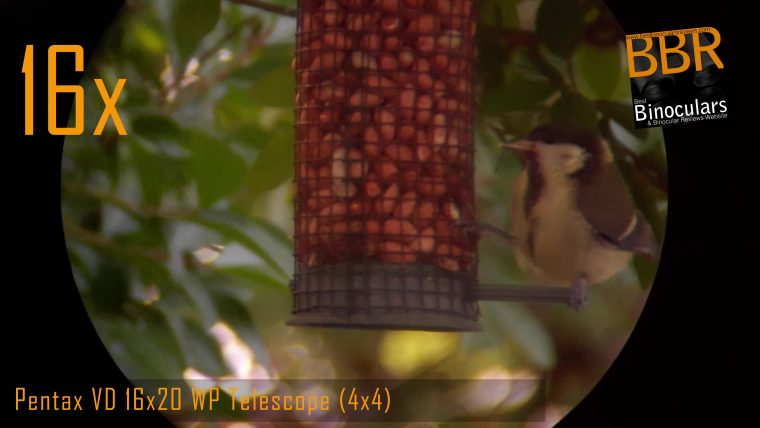
16x
Remember the tiny 4x Pentax VD Binocular we began with that could split into two and then be joined end on end to make a 16x zoom telescope, well that can focus to a close range and this is what I managed to capture with it.
Apart from the zoom level difference, it is interesting to note how much dimmer the image is when compared to the footage I captured with it as a 4x monocular, this is because it still has a 20mm lens, but a far higher 16x magnification, which produces a tiny 1.25mm exit pupil (20/16), whereas as a binocular or monocular, it created a much larger 5mm exit pupil (20/4).
So whilst it is true, by putting the two monoculars end-to-end, the light now also has to pass through much more glass to get to your eyes, which is sure to make a difference, I think it also demonstrates just how important the exit pupil can be for image brightness.
Also worth mentioning here is that because we are zoomed in so much, a lot of the action is happening outside of our field of view. With my setup, quickly moving the view is not an option. Had I been using a lower-powered device, I am sure we would have captured these two siblings squabbling.
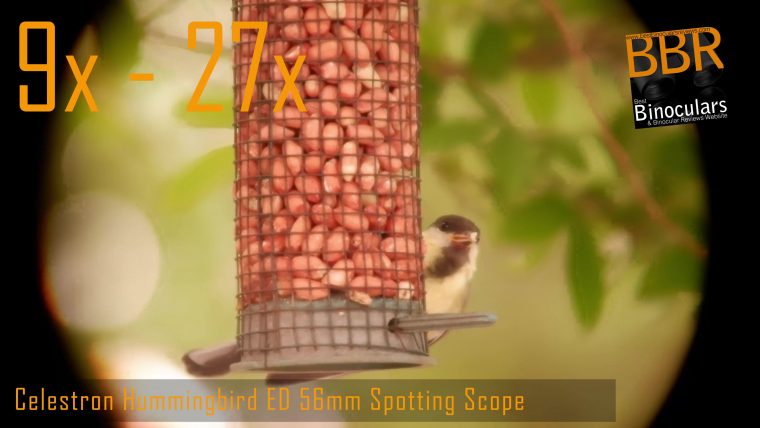
9x-27x
So next up is an example of the zoom range and the type of image you can expect at close range from a small travel-friendly spotting scope.
I am using the popular Celestron Hummingbird ED 56mm Spotting Scope that has a 9x to 27x zoom eyepiece.
For a spotting scope, it has a relatively small 56mm lens, but for a binocular, this is considered large. So comparing it to the tiny 20mm lens on the 16x Pentax monocular, even at 27x magnification, the spotting scope is able to produce a brighter image.
As I zoom in and out, just take note of how the field of view changes, but also how the image brightness also changes.
Whilst I really like this particular scope for normal use with my eyes, the design of its focus ring that goes around the body, made it much harder for me to use when digiscoping compared to the larger and much more powerful Bresser scope which I will demonstrate next.
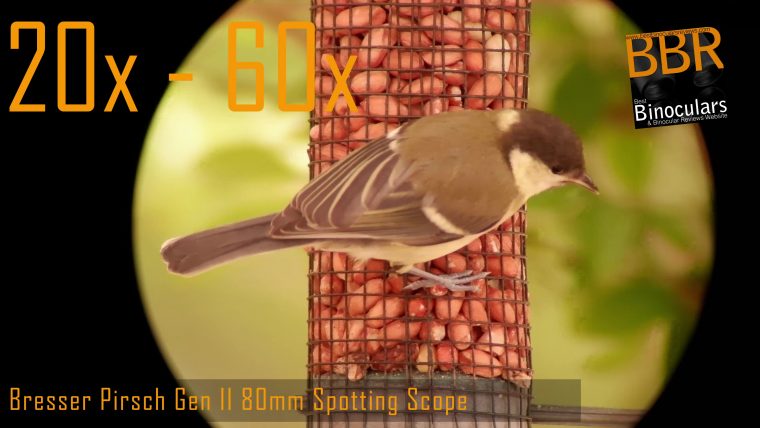
20x – 60x
Right, so last, but by no means least is the sort of image and zoom level you can expect to see when looking at something at close range through a full-sized spotting scope with a powerful magnification.
To demonstrate, I am using my Bresser Pirsch Gen II 80mm Spotting Scope that has a very wide range 20x to 60x zoom eyepiece fitted.
Because of its high-quality optics and the large 80mm lens that lets in plenty of light, the image brightness is impressive, especially at the 20x zoom level where it easily matches many binoculars with less than half the power.
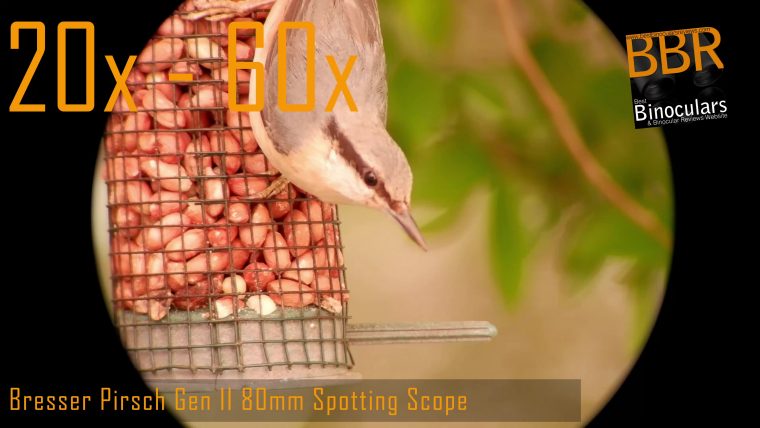
So just remember a 10x42 binocular for example would have a 4.2mm exit pupil, whilst at 20x zoom, with it’s 80mm lens, this is comparable as it produces a 4mm exit pupil, but you also get 2x the image detail.
The downside to this is you have a much larger instrument that HAS to be mounted on a tripod to use and of course, you will notice the massively reduced field of view.
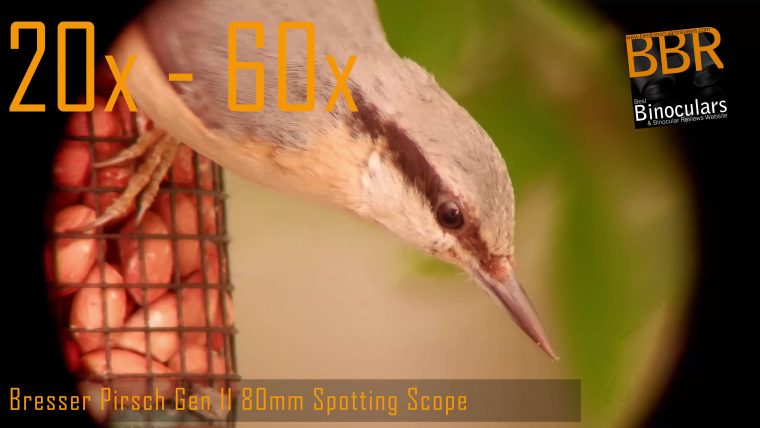
Also worth pointing out is that as well as a reduced field of view, the more you zoom in, the shallower your depth of view becomes, meaning you have to be far more accurate with the focusing. This is fine for a static object, but one that is moving means you have to constantly change focus.
Indeed at such a close range, zooming up beyond 20x to 30x was really not necessary and it made it very difficult to try and keep even a fairly static bird on a feeder in the frame and in focus.
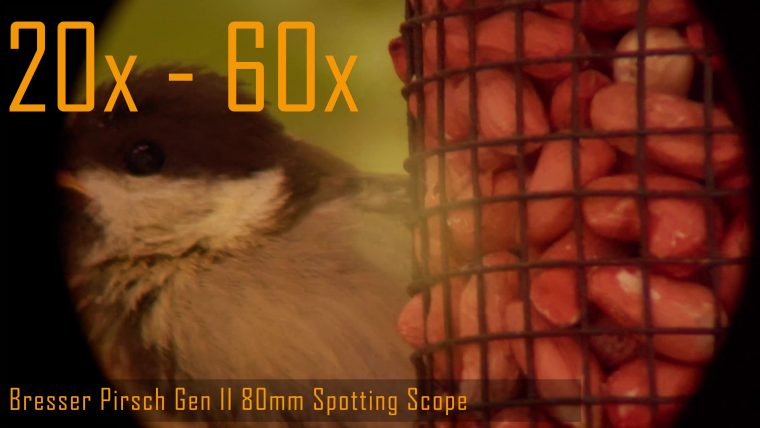
As I zoom in to 60x magnification, notice how the image gets dimmer. This is once again caused by the exit pupil reducing in size. so at full 60x zoom, the exit pupil on an 80mm scope is only 1.33mm in diameter, which is simar to the 16x20 Pentax telescope we saw earlier.
Like the large binoculars, a powerful scope like this really comes into its own at mid to long ranges, which I will be covering in the next article in this series.
Canon Zoom Digital Monocular
I know I said the Bresser spotting scope would be the last instrument we would look at for this zoom comparison test, but during the making of this video, a package arrived for me from Canon who I knew wanted me to test and review their tiny digital zoom monocular.
It is a simple little device with 2 optical zoom levels: 100mm, 400mm, and a digital 800mm zoom, which according to my research on the internet, loosely translates to a zoom of 2x, 8x, and 16x, but I think this is may be referring to a camera with a larger sensor because, on the Canon site, they say it has zoom levels of 1.2x, 4.8x, and 9.6x?
So, I thought it would be interesting to also capture some footage with it from the same position, which is what you are looking at now, and then we could compare it to the optical devices:
100mm ~ 2x – 3x?
The 100mm image to me looks slightly less zoomed in than the 4x binoculars, so maybe 2x to 3x?
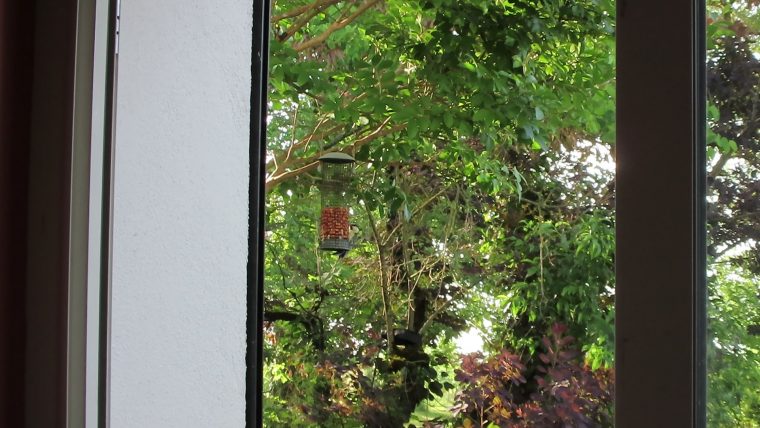
400mm ~ 11x?
Let me know what you think in the comments below, but to me, it kind of looks like the middle 400mm setting is at about the same zoom level as the 10x binoculars.
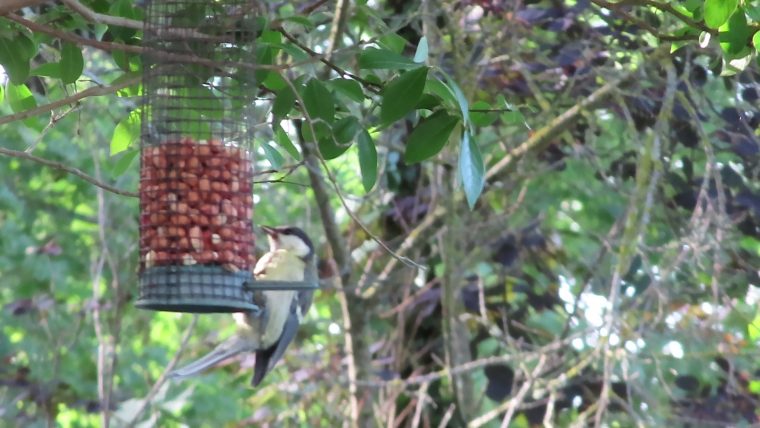
800mm ~ 18x?
Whilst the 800mm digital zoom looks to me to be a little more powerful than the 16x Pentax telescope, and just below that of the 20x magnification on the Bresser spotting scope?
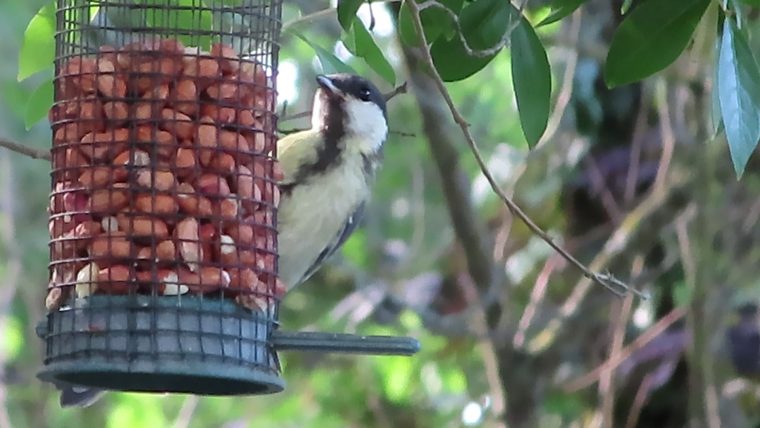
Also, an interesting point to note here is I captured all this footage holding the Canon monocular in my hands, without using a tripod to keep the image still. Whilst certainly not at the same level as Canon’s well-known IS image-stabilized binoculars, I do feel the image stabilization on what is essentially an entry-level device is still pretty impressive.
I also noticed that the image you see on the LCD screen when looking through the Canon monocular, to my eyes looks better and brighter than the footage it actually records. This is why based on my first look at it, I would think of it not as a camera, but more as a compact monocular with a pretty powerful zoom that can also record if you want to.
Anyway, I am not going into any more detail on this interesting device in this video, as I still need to do some more research and testing. The full review will be up on BBR pretty soon, so look out for that.
So What Binocular Magnification Should You Get?
So in conclusion to part one of this scope, monocular and binocular zoom comparison test, I hope I have demonstrated that the right magnification for you will ultimately depend on a number of factors and that whilst yes, with a bigger zoom it is possible to get MUCH closer to your subject and thus potentially see more detail, but at the same time there are many compromises.
At close range, there definitely is such a thing as a binocular that is too powerful, and often you can actually “see” or observe more with a lower-powered instrument.
In part two of this Binoculars Zoom Test series, I will once again be comparing these instruments, but this time at longer distances. I will add a link to that article as soon as it goes live.

 Article | Posted by Best Binocular Reviews
Article | Posted by Best Binocular Reviews 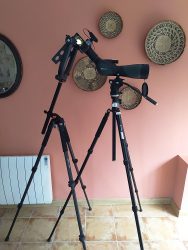

 Categories:
Categories:  Tags:
Tags: 
